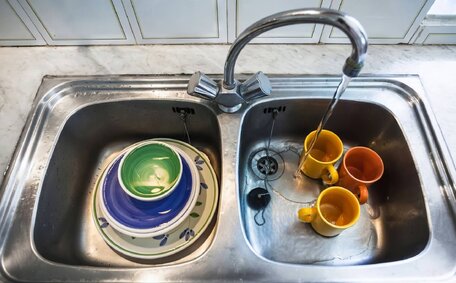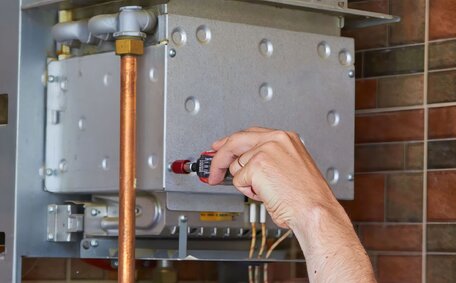Typical lifespan and design factors of gas pipelines
The typical design lifespan for a gas pipeline is approximately 50 years. There are several key factors that influence how long a gas pipeline can remain in operation:
- Pipeline material - Most modern gas pipelines are made from steel or plastic. Steel allows for higher pressure capacity but can corrode over time. Plastic is more durable but has lower pressure tolerance. Quality materials certified for gas line use can last 50+ years.
- Construction and maintenance - Proper pipeline construction, testing, burial depth, and ongoing inspection/maintenance all impact lifespan. Well-installed and maintained gas lines can serve reliably for decades.
- Environmental stress - Exposure to water, soil movement, nearby construction, etc. creates stress on pipelines. They are designed with some tolerance, but excessive or unexpected stress can lead to failure prior to retirement.
- Advancements - As renewable energy advances, demand for gas may eventually decline. While pipelines are very long-lived, shifts in energy sources may dictate that they are no longer viable and thus should be retired.
When planning gas infrastructure like pipelines and home gas lines, the 50-year lifespan guides investment and planning cycles. With sound design, construction and maintenance, gas pipelines often meet or even exceed that target.
Pipe materials and their expected lifespans
The material used for gas pipelines directly impacts their durability and lifespan expectations. Common materials include:
- Steel - The most traditional pipeline material. Properly coated/maintained steel gas pipes can last 50+ years. More prone to corrosion than plastic.
- Plastic - PVC - PVC plastic pipe is hardened to withstand pressure. Can last upwards of 70 years if installed correctly, but lower pressure limits.
- Plastic - Polyethylene - Softer but very durable plastic piping. PE pipes have a typical lifespan of around 50 years depending on soil/environmental conditions.
- Concrete - Concrete coating in steel pipelines protects from corrosion. Such composite pipes can theoretically last over 100 years.
While many factors impact how long a pipeline lasts, material choice plays a key role. Utilities select materials like anti-corrosive steel or durable plastics to maximise lifespan while meeting capacity needs.
Environmental factors impacting pipeline longevity
Gas pipelines can be designed to last for decades, but environmental factors often have significant impacts on their actual lifespan:
- Soil Movement - Shifting or unstable soils put stress on buried pipelines and may bend/crack them over time, necessitating repairs or replacement.
- Temperature Extremes - Expansion and contraction from seasonal or abrupt temperature swings causes material fatigue. Areas with wide temperature shifts tend to impact pipeline longevity.
- Floods and Storms - Extreme weather events and flooding can damage pipelines through shifts in soil, debris impact, or corrosion issues if pipes stay wet. This may lead to premature retirement.
- Nearby Construction - If later unrelated construction occurs near a pipeline, the vibration and heavy equipment can stress pipe materials. Construction-induced damage may emerge years later.
Utility engineers consider these environmental factors when designing pipelines, but unexpected or atypical events still occur. Ongoing maintenance and inspections help detect potential issues before failures arise. But unpredictability means most pipelines do not achieve the full 50+ year lifespan in practise.
Corrosion and stress - threats to pipeline lifespan
Two major factors that can reduce the lifespan of gas pipelines are corrosion and operational stress over time:
- Corrosion - Both internal and external corrosion pose threats, especially for metal pipelines. Coatings help protect the outside, while corrosion inhibitors treat the gas stream internally. If unchecked, corrosion weakens pipes causing leaks or ruptures.
- Pressure Cycling - Repeated pressurisation cycles create material fatigue. Utilities aim to operate at consistent pressures but fluctuations still occur. Higher pressures also accelerate crack growth leading to failures.
- Vibrations & Strains - Earth movements, nearby construction, temperature shifts, pressure changes, and even the gas flow itself creates vibrations and strains in pipeline materials contributing to fatigue or cracks.
Utilities use design margins, corrosion protection, routine pigging to clean pipes, and operating protocols to minimise these effects. But over decades, cumulative damage still reduces the safe operating life, often requiring pipelines to be replaced or decommissioned sooner than the 50-year target lifespan.
Maintenance practices to extend pipeline lifespan
Regular maintenance is crucial for gas pipelines to achieve their expected 50+ year lifespan. Utilities serving the Parramatta area follow strict pipeline integrity management programmes including:
- Cleaning & Inspections - Pipelines are regularly pigged to clean interior walls and inspected internally for corrosion. External inspections also occur.
- Test Stations - Strategically placed test points to check for leaks or corrosion as an early warning system.
- Patrolling - Visual inspections of pipeline routes to check for leaks, construction activity, soil movement, etc.
- Pressure Controls - Keeping flows and pressures more constant reduces strain and pipe fatigue.
- Prompt Repairs - Early detection coupled with swift maintenance helps prevent minor issues from becoming major pipeline failures.
- Cathodic Protection - Electrical currents applied to mitigate steel pipeline corrosion in Parramatta’s damp clay soil conditions.
This lifecycle management requires substantial investment, but pays dividends through fewer costly emergency repairs and longer operational lifespan. Well-maintained gas pipelines serve communities safely for 50+ years before requiring renewal.
Knowing when replacement is necessary
Even with comprehensive maintenance programmes, gas pipelines inevitably near the end of their operational lifespan. There are several indicators utilities monitor to determine when replacement is necessary:
- Age - Pipelines that were installed years ago, surpassing the 50-year mark, face greater risks of leaks, corrosion, or failures. Industry standards often mandate replacement regardless of condition.
- Change in Demand - Declining gas demand may prompt closure rather than replacement. Growth may require larger replacement lines.
- Inspection Results - Corrosion detections, cracking, wall thinning and other defects reaching actionable thresholds per regulatory codes require replacement.
- Performance Issues - Frequent leaks, breaks, pressure changes or service interruptions flag replacement needs before safety is jeopardised.
The decision to replace pipelines costs utilities millions. But allowing an outdated infrastructure, a pipeline would be compromised, fail poses grave public safety risks. Rigorous inspections and adherence to engineering standards aim to replace gas pipelines proactively after approximately 50 years.
Decommissioning: Replacement vs abandonment
When a gas pipeline reaches the end of its lifespan, operators must decide whether to replace it with new pipe or decommission and abandon it. Both options carry costs and safety considerations.
Replacement allows continued gas transmission but requires major construction to lay new pipe. The old pipeline may be left in place and taken out of service, or removed.
New materials and routes are chosen considering current conditions. New materials and routes are chosen considering current conditions.
Abandonment permanently closes a pipeline by purging gases and capping ends. Companies must demonstrate elimination of explosion risks to regulators before abandonment approval. Abandonment permanently closes a pipeline by purging gases and capping ends.
Though lower initial cost, abandonment reduces future capacity and requires supplements if demand persists.
With Australia’s continued use of natural gas, replacement is often the preferred path forward for major pipelines. But companies do consider area needs, pipe condition, project budgets and safety ramifications when weighing replacement or abandonment decisions heading into a pipelines retirement.
Safety risks of pipeline abandonment
When gas pipelines are abandoned rather than replaced, there are significant safety risks if not managed properly:
- Explosion Potential - Outdated pipes may still contain pockets of natural gas or residues even after purging. Corrosion can lead to failures and gas ignition over time if left unchecked.
- Environmental Contamination - Pipelines traversing areas with potable water sources or sensitive habitats pose contamination risks from residues or failures. Ruptured lines also disrupt soil and terrain.
- Public Health Factors - Rodent infestations, pooling of stagnant water or other issues in unused pipes near housing can create illness risks. Mercury and lead used in older pipeline gaskets present other concerns.
- Structural Barriers - Abandoned pipes left buried impede future construction and maintenance on rights of way for roads, rail, utilities, etc. They create unnecessary barriers to community growth and access.
To mitigate these risks when abandoning pipelines, companies follow rigorous purging protocols and demonstrate safe closure to regulators. Most abandoned gas lines remain buried to avoid environmental disruption, but utilities monitor remaining infrastructure to manage lasting safety threats.
Environmental impact
Gas pipelines undoubtedly have environmental impacts, both during operation and potentially long after decommissioning if not properly handled. Active pipelines pose contamination risks from leaks or ruptures. Construction also disrupts habitats and landscapes traversed by new pipeline routes.
For abandoned pipelines, studies by the Pacific Gas and Electric Company found that even 15 years after being taken out of service, nearly 30% of tested pipelines still held potentially explosive gas pockets. This persistence of contamination shows that purportedly inactive pipelines still present very real safety and pollution risks if left to deteriorate underground.
Fortunately, strict protocols now regulate the decommissioning process, forcing companies to demonstrate full purging and permanent safe closure of pipelines planned for abandonment. Though buried abandoned pipes remain an obstacle for future subsurface infrastructure projects, modern closure methods help allay contamination issues over time.
But the lasting impacts still point to pipeline replacement rather than abandonment as the most responsible decision whenever feasible.






